What Year Did Xbox 1 Come Out
The Evolution Of Xbox Consoles
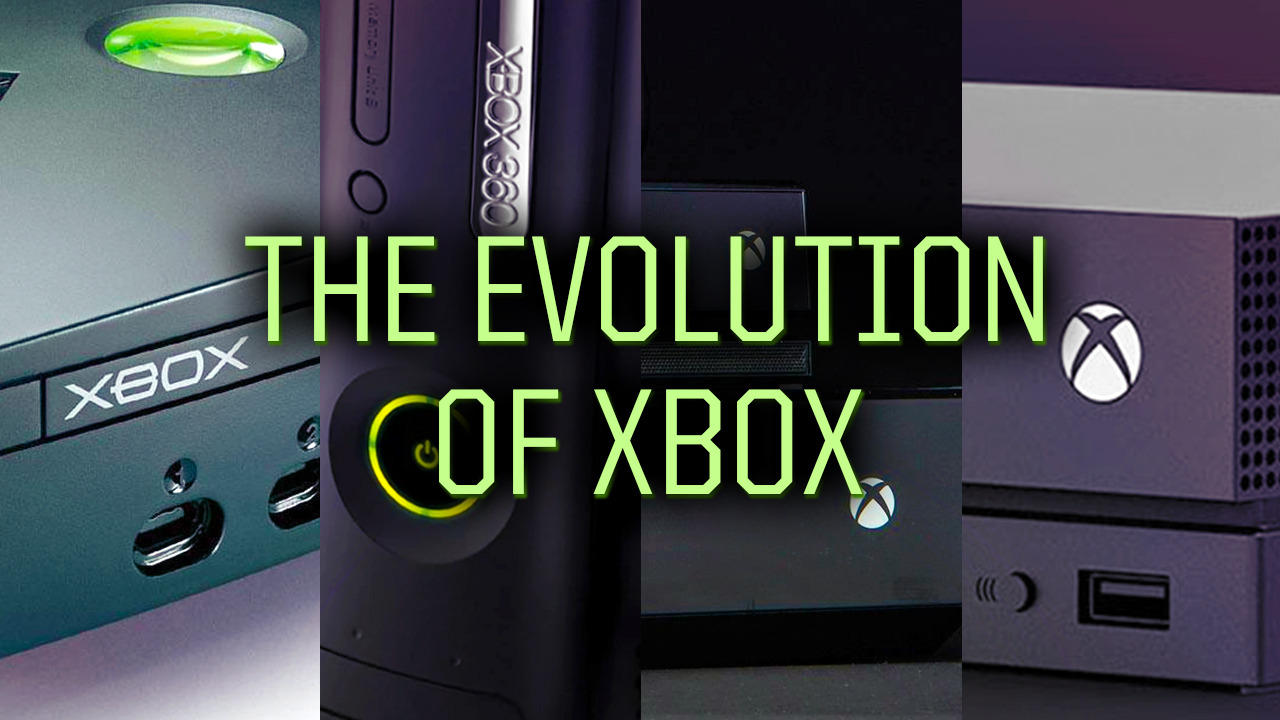
An Xbox console retrospective

Xbox
Microsoft debuted its original big, black, and green Xbox in North America on November 15, 2001. It retailed for $300 and launched within the sixth generation of consoles, which made it the first major gaming system to be created by an American company since the Atari Jaguar.
Prior to its launch, Microsoft's major gaming efforts had been focused on the PC, where its Windows operating system held a monopoly on the market. Arguably the closest the Redmond, Washington-based company had gotten to launching a console was when it developed a custom version of Windows CE for the Sega Dreamcast that supported a version of its DirectX API.
After seeing how Sony's console business was detracting from PC game sales and fearing that the rival company would own the living room with the PlayStation 2, Microsoft decided to release its own system to compete. An early prototype was put together by Microsoft engineers as a side project using Dell laptop parts. Microsoft decided to invest and iterate on this design, which eventually paved the way for the Xbox to use the PC's x86 architecture, which was rare for a console at the time. The operating system was based on Windows' architectural kernel. The system was originally going to be called the DirectX Box, since it used the company's DirectX API, but was shortened to Xbox after focus groups thought it sounded better.
The console was equipped with a 32-bit Intel Celeron/Pentium III hybrid CPU clocked at 733MHz. It had 64MB of DDR SDRAM clocked at 200MHz set up in a dual-channel configuration. For its GPU, the Xbox used a custom chip from Nvidia based on the company's GeForce 3 line of graphics cards, and was clocked at 233MHz. The GPU supported Microsoft's DirectX 8 API and was capable of delivering 7.3 gigaflops of performance. Though it supported 32MB memory cards, it also came with an 8GB hard drive, which was a costly investment for the company at the time. This made it the first console to include a built-in HDD.
While developers generally agree that the Xbox was more powerful than the competing GameCube and PlayStation 2, few third-party ports took advantage of the extra processing power. It ended up selling over 24 million units, which allowed it to edge out Nintendo's system. Though it came in second that generation and established a reputation for the company in the console space, it was sold at a loss, and greatly fell short of matching the sales of the PS2, which sold over 155 million units. Despite major efforts by Microsoft, the console struggled in Japan, with some figures estimating it sold roughly half a million systems. Compared to the competition, the Xbox became a haven for more western games and first-person shooters, the latter of which were relatively rare on consoles.
Halo was a surprise hit for Microsoft and catapulted the system to the main-stage. The company had acquired developer Bungie for the game and the Xbox-launch exclusive raised the bar for first-person shooters on consoles. It also became a fan-favorite at local LAN parties thanks in part to the fact that it supported up to 16 players: Four consoles with four attached controllers could sync up over their Ethernet ports. The Xbox was the first console to support a broadband Ethernet port, and it paved the way for Xbox Live, Microsoft's subscription-based online gaming service. Xbox Live was able to grow and ride the success of Halo 2, which sold over eight million units. The online service itself peaked that generation with around 20 million users.
Competed Against: Sega Dreamcast, Sony PlayStation 2, Nintendo GameCube
Notable Games: Burnout 3: Takedown, Conker Live and Reloaded, Dead or Alive 3, Fable, Forza Motorsport, Halo: Combat Evolved, Halo 2, MechAssault, Ninja Gaiden, Panzer Dragoon Orta, Project Gotham Racing, Star Wars: Knights of the Old Republic, The Elder Scrolls: Morrowind, Tom Clancy's Splinter Cell
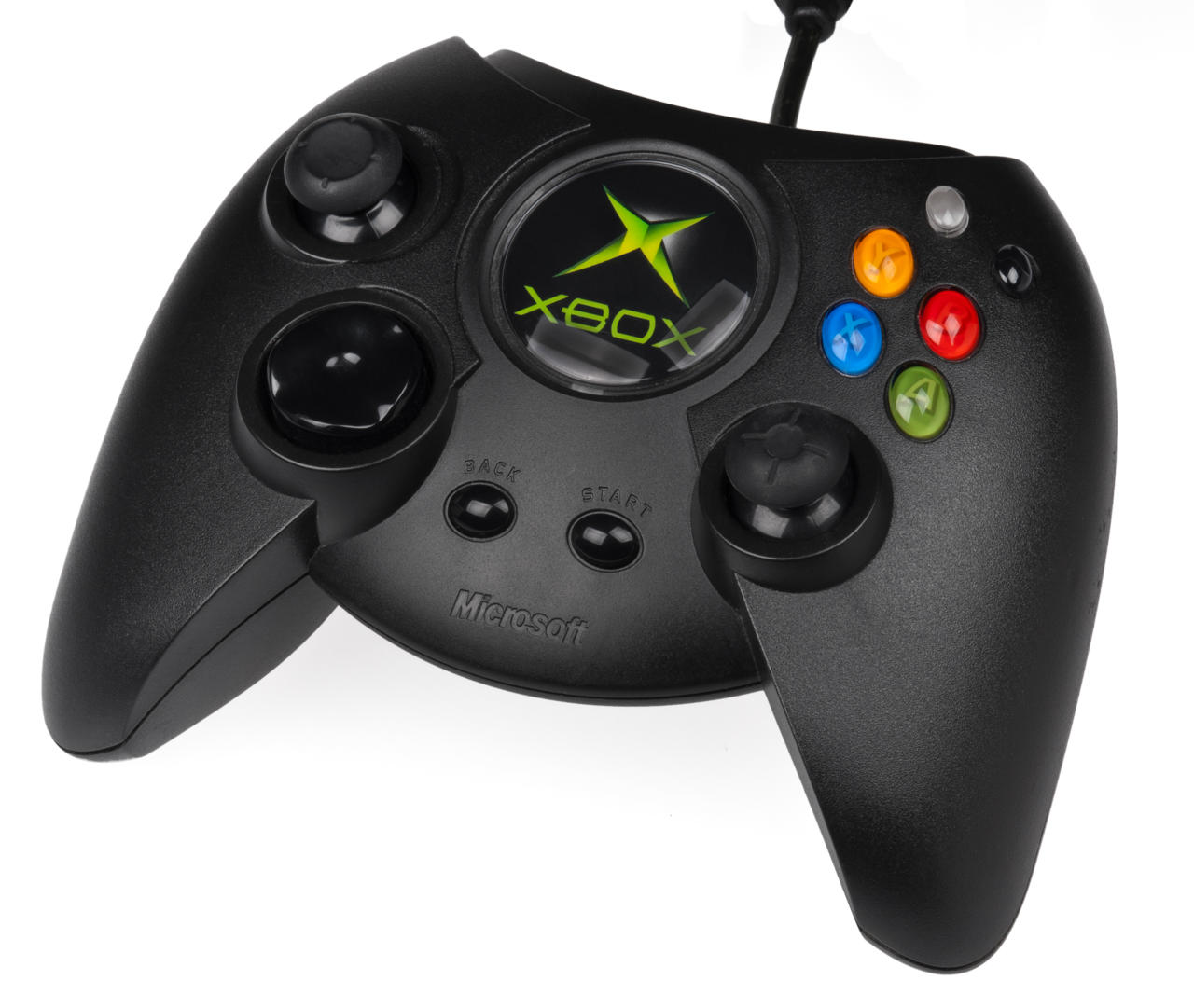
Xbox "Duke" Controller
The controller that originally launched with the system was nicknamed the Duke. It set the precedent for Xbox controllers to use two offset analog sticks, which was unconventional at the time, coupled with a D-pad. It also had six analog face buttons along with two analog triggers. It offered a memory card slot up at the top and introduced a breakaway cable as a safety measure against tripping. Perhaps its most notable characteristic, however, was its size. It was criticized for being big and heavy--hence the nickname--and would soon be replaced by a slimmer S model.
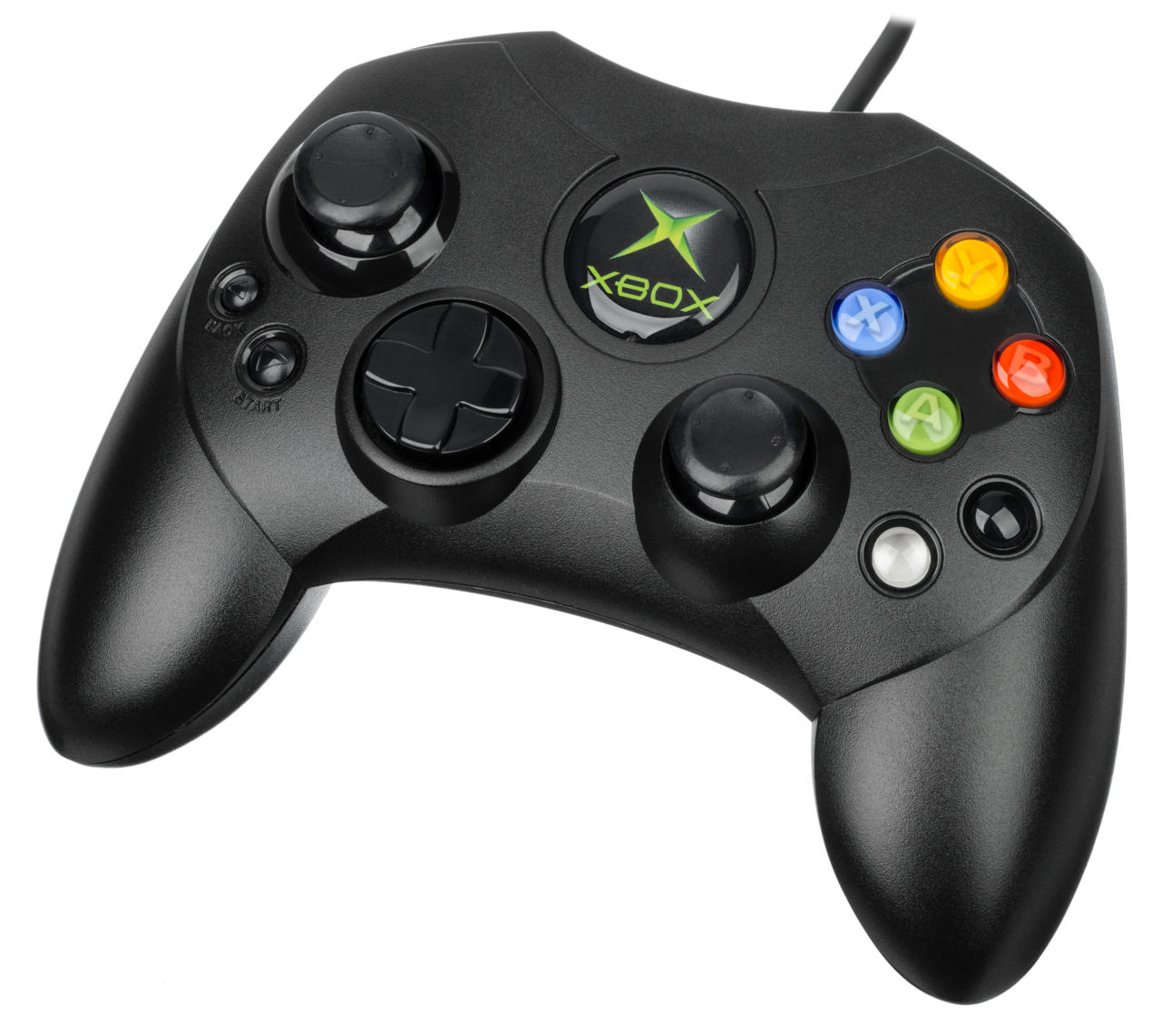
Xbox Controller S
Microsoft originally designed the Controller S for Japan, where it tailored the ergonomics for smaller hands. The S model was slimmer and turned out to be more comfortable as a result. It eventually replaced the Duke internationally in 2002. It also set the precedent for the four main face buttons to be spread evenly in a diamond pattern.

Xbox 360
Microsoft released its second console in North America on November 22, 2005, roughly a year before its PlayStation 3 and Nintendo Wii competitors. The Xbox 360 came in two SKUs at launch. The higher-end Pro Edition came with a 20GB hard drive and retailed for $400, but Microsoft also wanted to offer a cheaper model that hit a $300 price point and released the Core model as a result. This SKU lacked a hard drive, which caused some confusion among game developers who weren't initially sure how to design games around this fragmented constraint. Users could purchase and add an optional Xbox hard drive to the console, however.
The first batch of Xbox 360s were white, though you could swap the front face-plate to customize the aesthetics a bit.
Over its lifespan, Microsoft's second console drastically outperformed its freshman effort, and sold over 84 million units worldwide. It continued to underperform in Japan, however, with estimates suggesting that it sold roughly 1.5 million units. Despite struggling in the land of the rising sun, it remains Microsoft's best-selling system to date.
The Xbox 360 moved away from the x86 architecture that the original console used. Microsoft instead opted to go with an IBM PowerPC solution. Its triple-core, six-thread CPU was codenamed Xenon and was clocked at 3.2GHz. After getting over a legal payment dispute with Nvidia over the original Xbox's GPU, Microsoft decided to go with ATI for its graphics. The 360 used a custom solution codenamed Xenos that was based on the manufacturer's Radeon X1800 graphics card. For memory, the system used 512MB of shared GDDR3 RAM clocked at 700MHz. While the memory was a very costly investment for Microsoft at the time, the company met with studios like Epic Games to see what games like Gears of War would need to properly run. The console supported DirectX 9 and developers generally saw the Xbox 360 as being easier to program for than the PS3 with its complicated Cell processor. Multiplatform games on the system tended to look better on the 360 as a result.
Via software emulation, the console offered backwards compatibility with roughly half the original Xbox library, though many ports did suffer from glitches of varying severity.
The 360 eventually became a popular living room entertainment center. It supported burgeoning streaming services like Netflix and also allowed users to stream media from local PCs on the network. It supported CDs, DVDs, and the now-defunct HD DVD standard via an optional add-on accessory.
While the console originally shipped with an Xbox 360 Dashboard UI that offered a tab-based "Blade" interface, the system would eventually get multiple overhauls. The first major one happened in 2008 and was called the New Xbox Experience (NXE). It was inspired by Microsoft's Windows Media Center and Zune design schemes. This update also introduced the ability to install games to mitigate load times. The console received its second major UI update in 2011, when it was modeled after Microsoft's Windows 8 Metro design language. This update added cloud storage for games, Bing voice search, and more.
While the 360 achieved great success for Microsoft, early models were plagued by what gamers would refer to as the Red Ring of Death, highlighted by the fact that a red LED ring would appear on the console to signal an overheating issue. It was such a pervasive problem that it ended up destroying systems. Users ended up coming up with ridiculous fixes that included baking the console's motherboard in ovens. This pushed Microsoft to spend over a billion dollars to extend the console's warranty by three years.
Competed Against: Sony PlayStation 3 and Nintendo Wii
Notable Games: BioShock, Blue Dragon, Call of Duty 2, Call of Duty: Modern Warfare, Crackdown, Dead or Alive 4, Gears of War, Gears of War 2, Gears of War 3, Ghost Recon Advanced Warfighter, Grand Theft Auto IV, Grand Theft Auto V, Halo 3, Halo: Reach, Halo 4, Kameo, Mass Effect, Mass Effect 2, Lost Odyssey, Red Dead Redemption, The Elder Scrolls IV: Oblivion, The Elder Scrolls V: Skyrim, Viva Piñata

Xbox 360 Controller
The Xbox 360 controller offered a marked improvement over the original Duke controller. Slightly smaller than the Xbox's Controller S, it continued to use two offset analog sticks coupled with a D-pad, but dropped two of the original controller's face buttons (going from six down to four), but added two bumpers in their place. The middle guide button allowed you to turn on the console, which was an appreciated new feature. There were both wireless and wired versions of the controller, the latter of which became popular with PC gamers due to its USB connection.
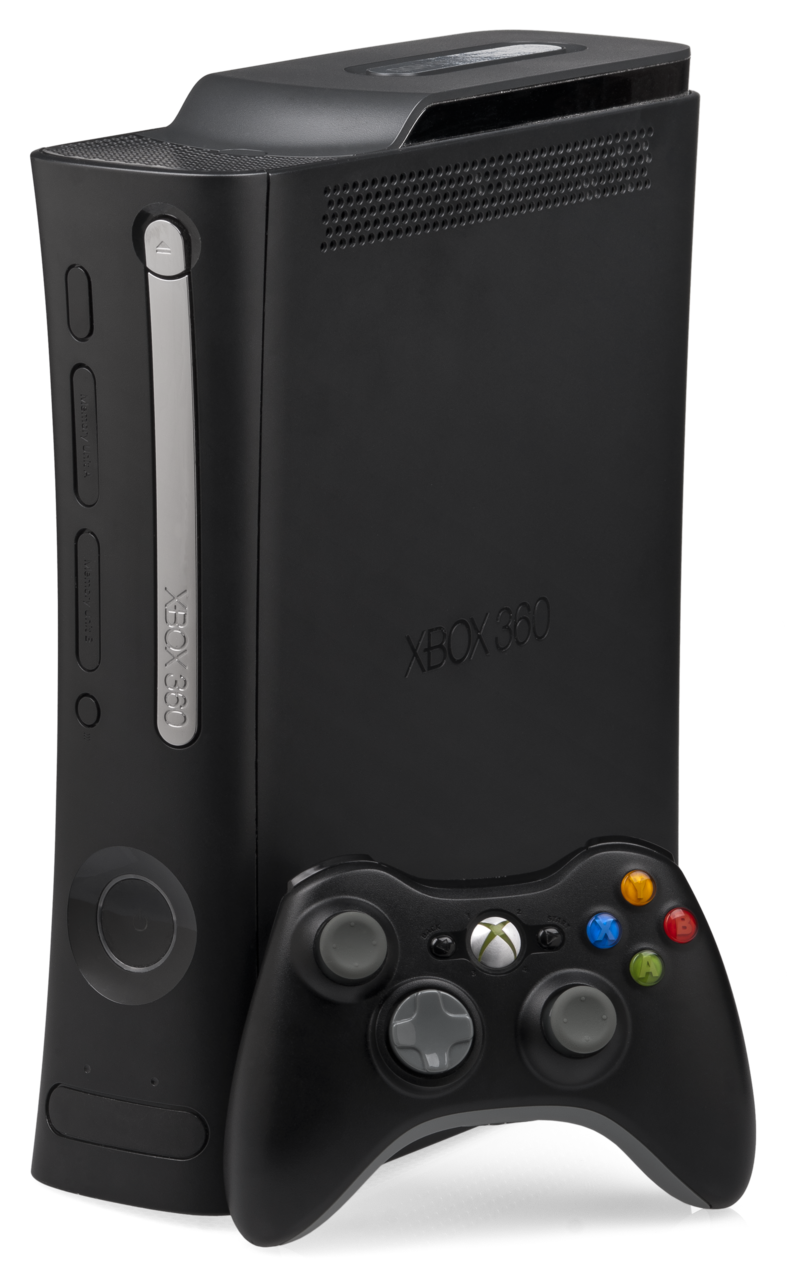
The Xbox 360 Elite
On April 29, 2007, Microsoft released its high-end Xbox 360 Elite model for $479. It came in black and was equipped with a larger 120GB hard drive, built-in Wi-Fi, and an HDMI output.

The Xbox 360 Arcade
Microsoft released the Xbox 360 Arcade on October 23, 2007 at $280 to replace the Core models. Like the Core units before it, the Arcade SKU didn't have a hard drive, though it did include a 256MB memory card. Its biggest difference was that it added an HDMI port. It also changed the color of the optical drive from chrome to white.

The Xbox 360 S
On June 14, 2010, Microsoft released its first significantly redesigned Xbox 360. The Xbox 360 S launched at $300 and came with a relatively large 250GB hard drive. It was also referred to as the slim model with its smaller, lighter design and smaller power brick. It was also more angular and featured a glossy black finish.
The S model used a more power-efficient processor and motherboard that mitigated the original design's thermal issues that could cause the Red Ring of Death. It also ran more quietly as a result. The S replaced the physical power and eject buttons with touch-sensitive ones and offered 802.11n Wi-Fi support along with two additional USB ports. When set up vertically, it also moved the hard drive bay from the top of the chassis to the bottom.
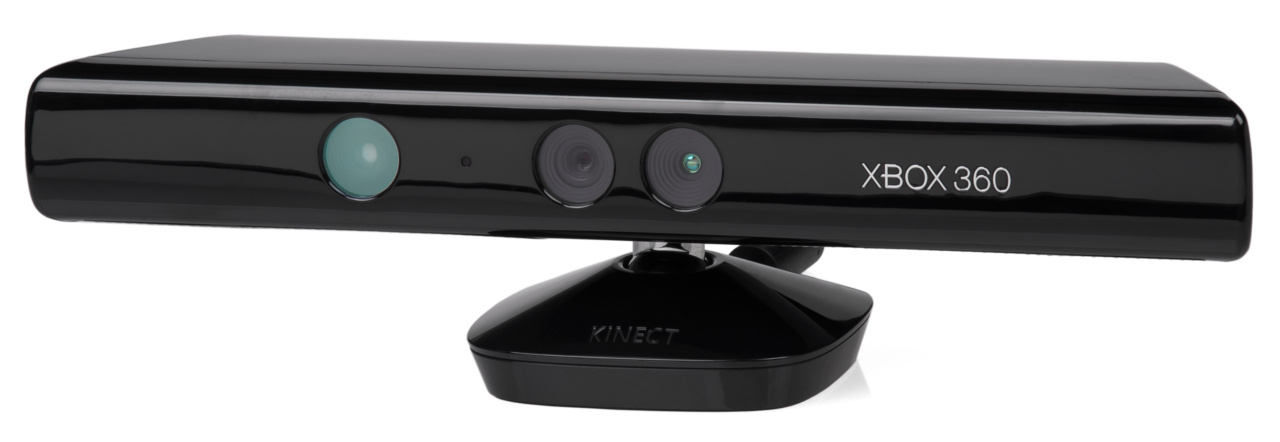
Kinect
Microsoft released its Kinect add-on for the Xbox 360 on November 11, 2010, roughly five years after the launch of the console. In addition to supporting voice commands, the motion control device used a relatively advanced sensor that allowed users to play games with their bodies rather than with controllers.
It represented Microsoft's first major foray into motion controls and ended up being a financial hit. Despite releasing relatively late into the console's lifecycle, the Kinect became the fastest-selling consumer electronics device, and sold eight million units within 60 days. To date, Microsoft has sold over 24 million first-generation Kinects, which puts it on par with the sales of the original Xbox console.
Competed Against: Nintendo Wii Remote, PlayStation Move controllers
Notable Games: Dance Central, Dance Central 2, Dance Central 3, Kinect Adventures, Kinectimals, Kinect Sports, Kinect Star Wars, Your Shape: Fitness Evolved
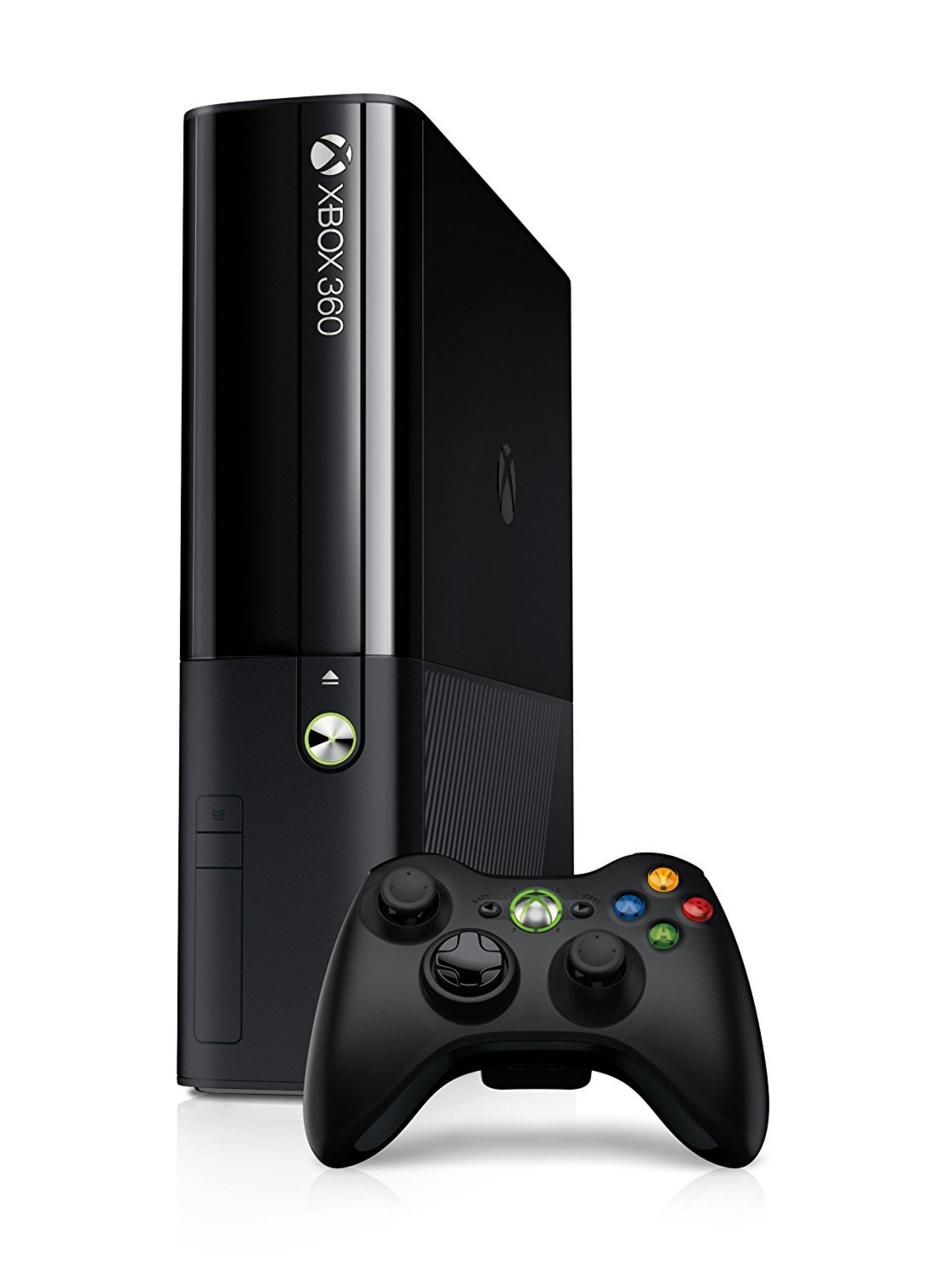
Xbox 360 E
Microsoft released its last 360 redesign in April 2013. The Xbox 360 E launched at $250 and included a 250GB hard drive. The console was actually slightly smaller and quieter than the S model before it and was geared at budget-conscious customers who were unwilling to spend $500 for the upcoming Xbox One. It was designed to look similar to the Xbox One with its mixture of black matte and gloss finish.
The E model also marked the return of physical power and eject buttons. The design did remove the console's S/PDIF and legacy AV connectors, however, and relegated users to an HDMI-only video connection. The 360 E version also offered four USB ports, which was one fewer than the S model before it.

Xbox One
Microsoft entered the eighth generation of consoles on November 22, 2013. The Xbox One launched at $500, with the company pitching it as the ultimate entertainment system and bundling every unit with a second-generation Kinect. The new Kinect uses a 1080p camera that offers a wider angle, improved tracking accuracy, and heart-rate monitoring. While Microsoft originally asserted that the Kinect was an integral part of the experience and made it a requirement to be plugged in at all times, the company eventually offered a cheaper $400 SKU on June 9, 2014 that omitted the sensor to be more competitive with Sony's $400 PS4 console. Users also voiced privacy concerns over the camera. Microsoft started selling the Kinect separately for $150.
The Xbox One moved back to the PC's x86 instruction set. The console uses AMD's custom Jaguar accelerated processing unit, which features two quad-core modules clocked at 1.75GHz. The system uses AMD's Durango integrated graphics solution based on the company's Radeon HD 7000 series GPUs. Durango is clocked at 853MHz and is capable of delivering 1.31 teraflops of performance. For memory, the Xbox One uses 8GB of shared DDR3 RAM clocked at 2133MHz, but it also offers 32MB of faster ESRAM embedded onto the APU. The console is generally seen as being slightly weaker than the competing PS4, which doesn't use any ESRAM but features 8GB of the fast GDDR5 memory. Some third-party ports run at a lower native resolution than on Sony's system.
Beginning June 2015, the console offered backwards compatibility with numerous Xbox 360 games via software emulation. At E3 2017, Microsoft announced that the Xbox One would eventually support original Xbox games as well.
The Xbox One removes the ability to swap out the hard drive but allows users to use external USB 3.0 drives to increase storage. You can also play media off of USB devices in addition to CDs, DVDs, and Blu-ray discs. In terms of network connectivity, the Xbox One features support for Gigabit Ethernet, 802.11n, and Wi-Fi Direct.
For its design, the Xbox One uses a two-tone chassis that blends matte black with a glossy finish and brought back capacitive touch buttons. While the console is relatively large, it runs cooler and quieter than Sony's competing PlayStation 4. Due to the placement of its air vents, though, it's relegated to a horizontal orientation, unlike the Xbox 360 before it.
Piggybacking on the success of the 360 as a multimedia device, Microsoft heavily pushed the console's multimedia functionality and added the ability to record and stream gameplay. The original operating system ran a stripped-down version of Windows 8 that was based on the OS' tile-based design language. The user interface initially received a lot of criticism for being unintuitive. It received many updates over the years, and in 2016, it added Cortana voice support.
Microsoft is keeping Xbox One sales numbers close its its chest, but industry estimates put it around 26 million units sold as of January 2017. This places it behind Sony's PS4, which has shipped over 60 million consoles to date.
Competing Against: Sony PlayStation 4, Sony PlayStation 4 Pro, Nintendo Wii U, Nintendo Switch
Notable Games: Battlefield 1, Dark Souls II, Destiny, Dishonored 2, Doom, Fallout 4, Forza Horizon 2, Forza Horizon 3, Forza Motorsport 5, Forza Motorsport 6, Gears of War 4, Halo: The Master Chief Collection, Halo 5: Guardians, Inside, Minecraft, Ori and the Blind Forest, Rise of the Tomb Raider, Sunset Overdrive, The Witcher 3: Wild Hunt, Titanfall, Titanfall 2

Xbox One Controller
The layout for the Xbox One controller remains similar to the 360's equivalent before it. Microsoft made some adjustments to its ergonomics, added a grippy texture to its analog sticks, and improved the controller's haptic feedback. The Start and Back buttons were also replaced by Menu and View equivalents.
In 2015, a newer revision added a 3.5mm headphone jack to the bottom of controller.
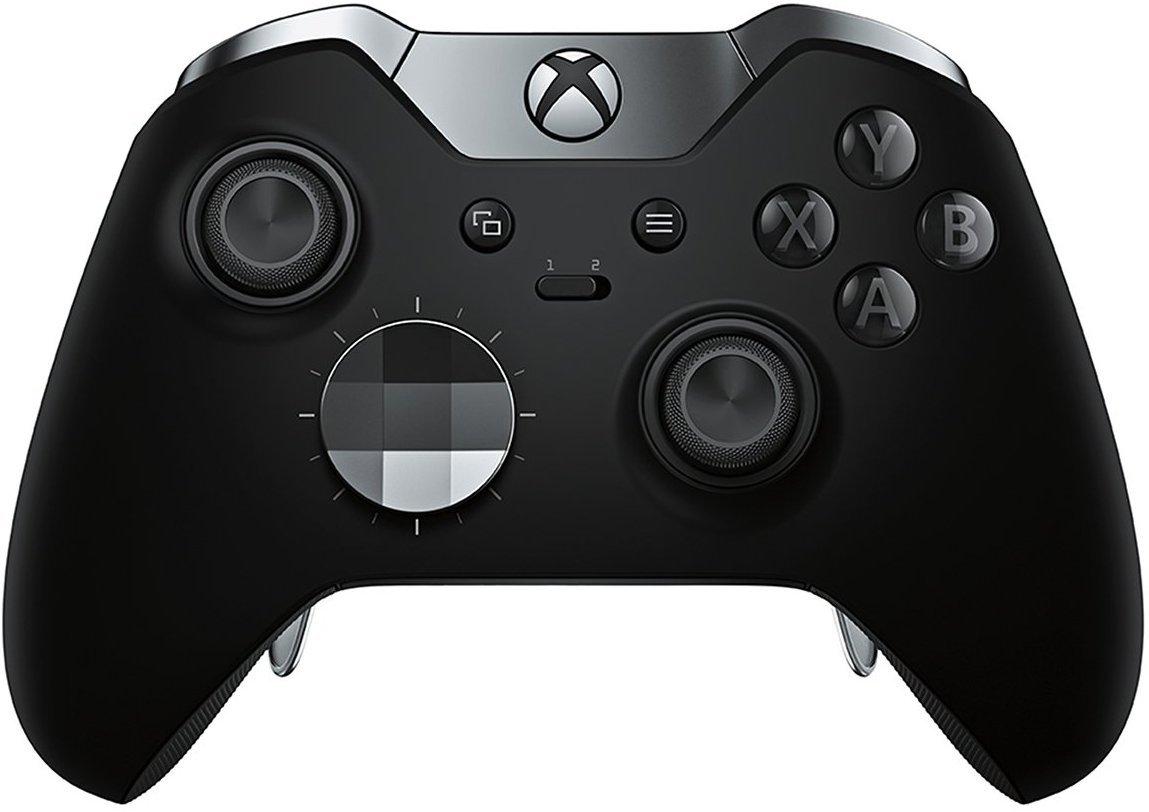
Xbox Elite One Wireless Controller
Microsoft released its Xbox One Elite Wireless Controller on October 27, 2015. The premium peripheral retails for $150 and features interchangeable parts that include dome-style convex sticks and taller concave ones. There is also an option to swap out the D-pad for a satellite-looking solution that was tailor-made for fighting games. In addition, the controller features hair-trigger locks that allow you to minimize the travel distance of the left and right triggers. Underneath the controller, there are four removable paddles that allow you to remap any of the buttons. The black and silver controller is significantly heavier than the stock model, which Microsoft asserts is mostly due to the higher-quality steel components.
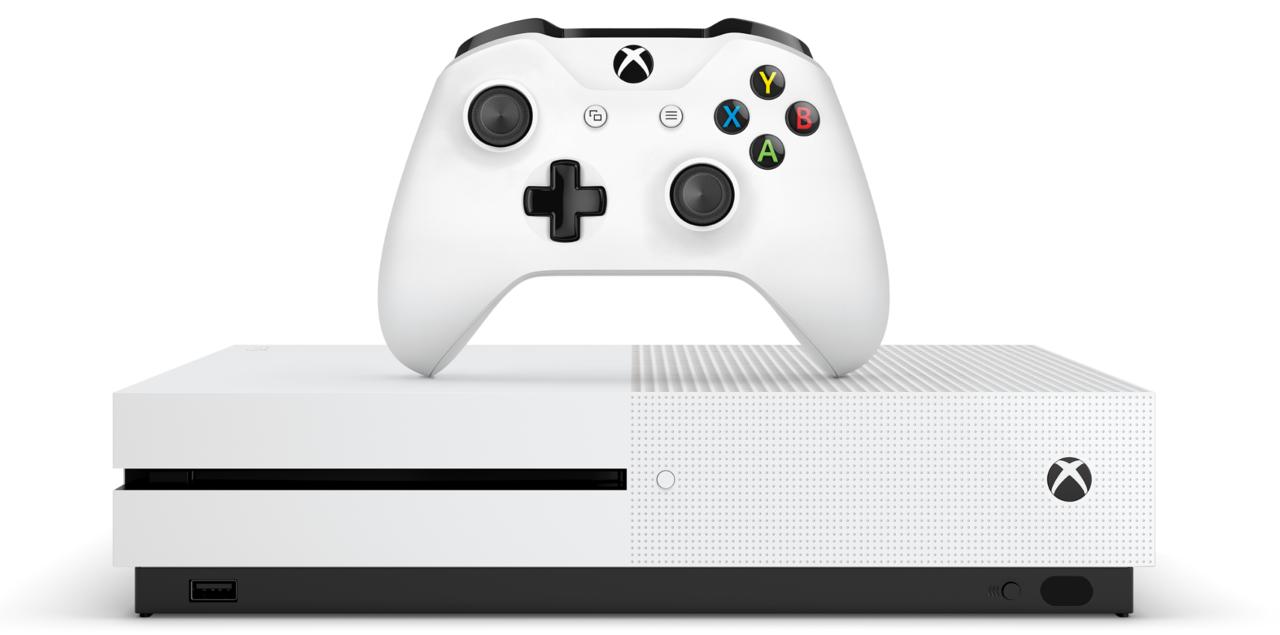
Xbox One S
Microsoft released its Xbox One S variant on August 2, 2016. The console redesign is roughly 40 percent smaller than the previous model and integrated the power supply unit into the chassis. It comes in a predominately matte white aesthetic coupled with black accents.
The One S once again brought the return of physical power and eject buttons and adds a 4K Blu-ray drive along with high-dynamic range (HDR) support. The console's GPU received a seven percent boost, going from 853MHz to 914MHz. The higher frequency was added to compensate for the extra processing overhead that HDR introduces. The Xbox One S could also upscale games to 4K. The console offers three hard drive sizes: 500GB, 1TB, and 2TB that cost $299, $349, and $399, respectively.
While the Xbox One S made several improvements to the base model, it removes the Kinect port. Microsoft offered a free Kinect adapter for a limited time, but now they're sold separately for $40.
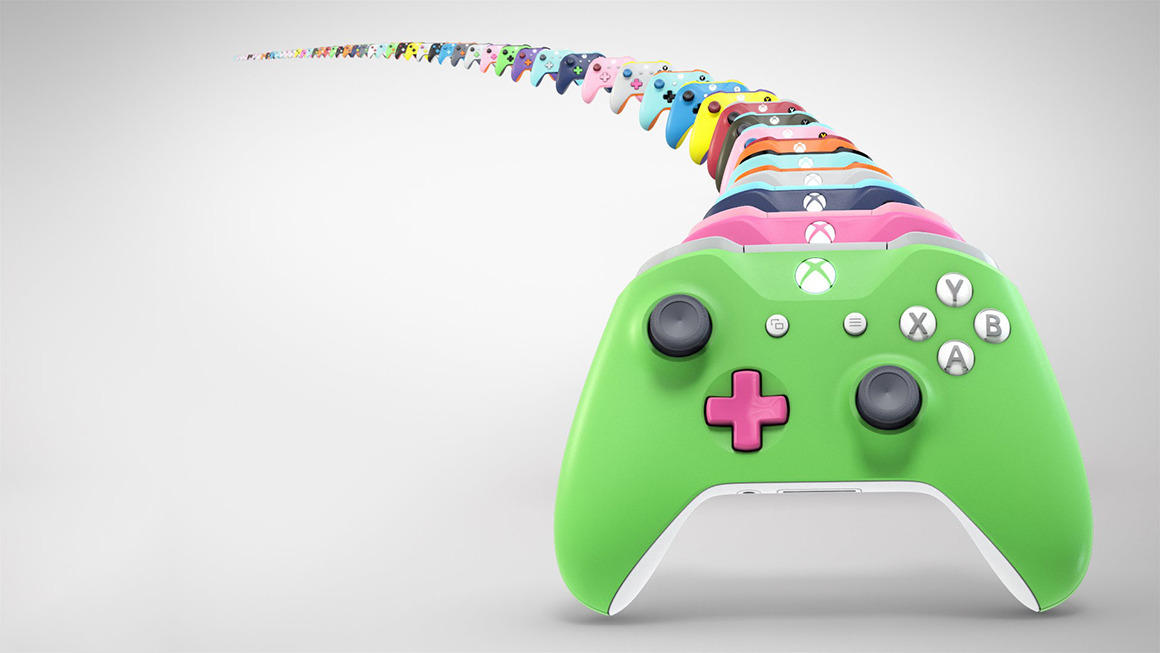
Xbox One S/Xbox Design Lab Controller
Microsoft debuted a slightly altered Xbox One controller with the release of its S console. The new variant supports Bluetooth and sports a new textured grip. There are also similar Xbox Design Lab controllers that allow you to greatly customize the colors of the peripheral.
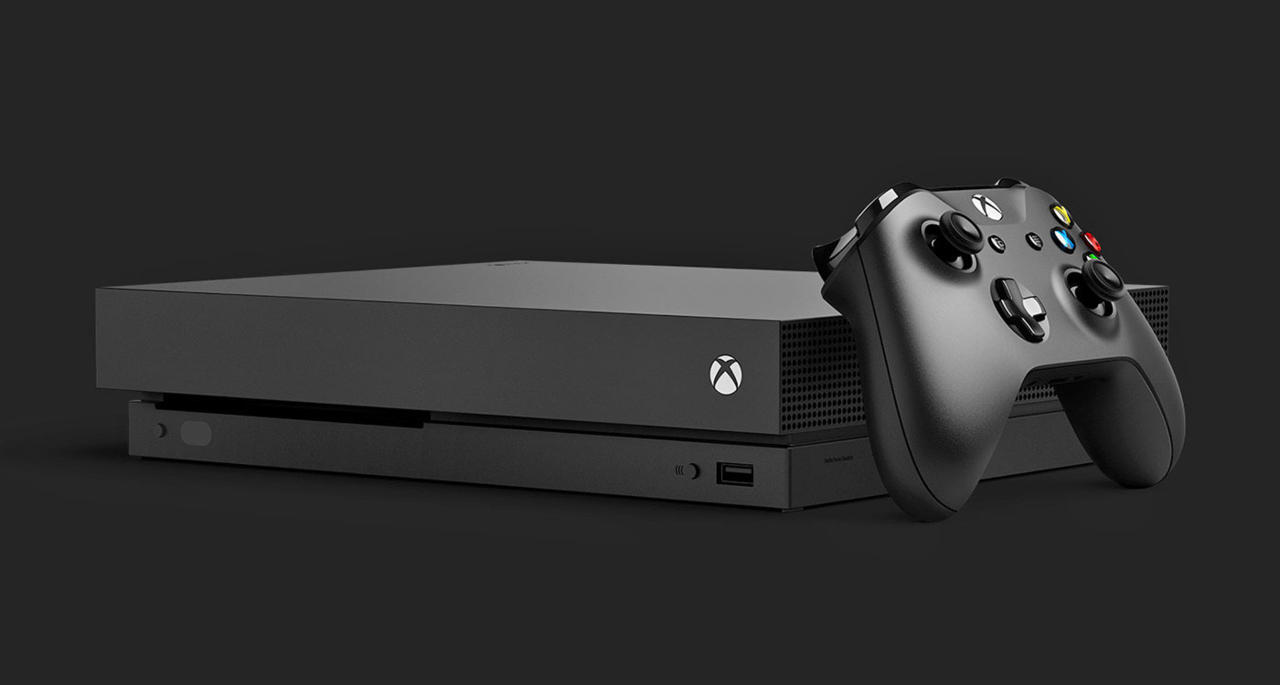
Xbox One X
The Xbox One X is set to release on November 7 with a $500 MSRP. Microsoft is pitching the One X as a 4K-capable console that can deliver six teraflops of performance but still runs the same games and software as existing Xbox One systems.
In terms of specs, the One X still uses an 8-core AMD system-on-a-chip like its predecessor, but it has been heavily tweaked and boosted to 2.3GHz. It also now uses 12GB of shared GDDR5 RAM. For its GPU, it uses a Radeon solution that's equipped with 40 compute units based on AMD's Polaris micro-architecture and is clocked at 1172MHz.
The console is backwards compatible with the Xbox One, down to its peripherals. In terms of design, the Xbox One X is the company's smallest console. Aesthetically, it looks a lot like a black Xbox One S.
Though the console is geared towards 4K enthusiasts with its higher-end specs coupled with its UHD HDR-capable Blu-ray player, Microsoft asserts that the Xbox One X will also be able to bolster gaming for those who don't own ultra high-definition displays. The company says the system will be able to add anisotropic filtering, support FreeSync panels, mitigate load times, and enable supersampling to make 1080p TV gameplay look sharper than standard HD output.
At E3 2017, the company showed off a plethora of games that would take advantage of the hardware's added processing power. They include Middle-earth: Shadow of War, Forza Motorsport 7, Assassin's Creed Origins, and more.
Source: https://www.gamespot.com/gallery/the-evolution-of-xbox-consoles/2900-1322/
0 Response to "What Year Did Xbox 1 Come Out"
Post a Comment